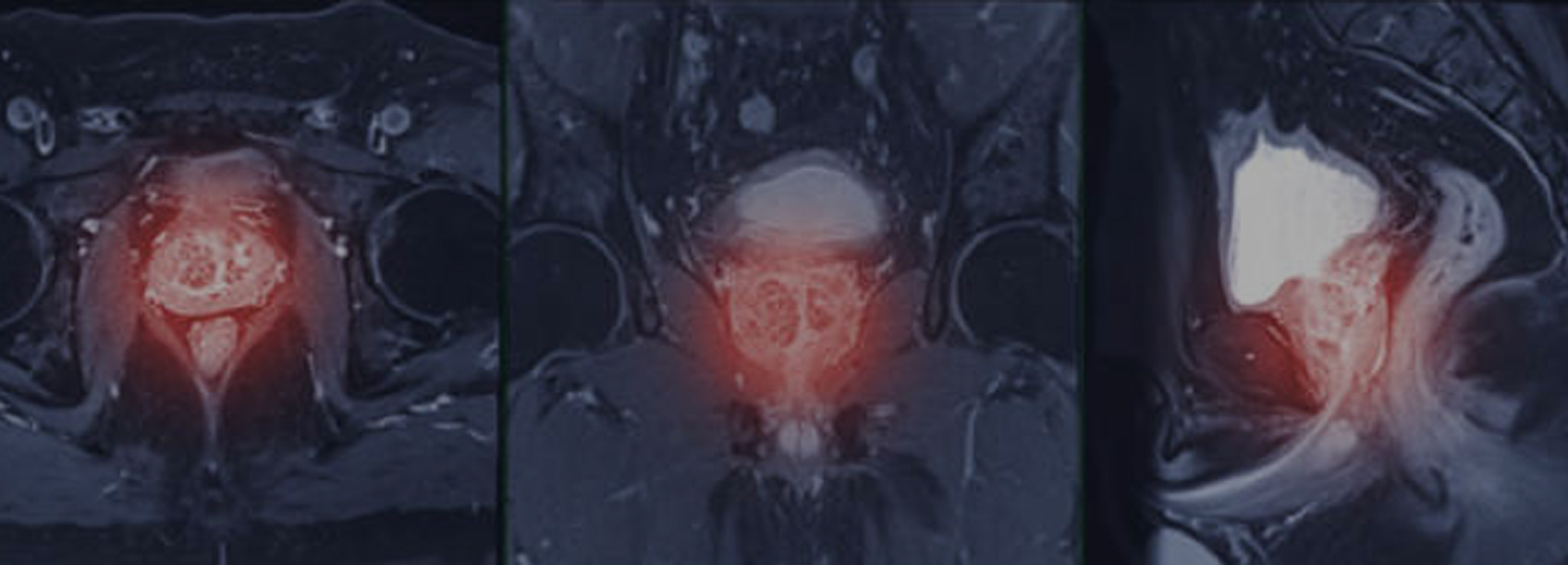In a recent paper1 published in August 2023 in the British Medical Journal of Oncology, 8 participating investigators say, “yes.”
Researchers found that MRI may have value in screening independently of PSA. These data will allow modelling of the use of MRI as a primary screening tool to inform larger prostate cancer screening studies.
Among the 457 responders (22%), 303 men completed both PSA and MRI tests.
- 1 in 6 screened men had a lesion on MRI
- More than half the men with significant cancer on biopsy had a PSA <3 ng/mL.
- Less than 1% of screened men were “over diagnosed” with low-risk disease
One sobering finding: 2 out of 3 men whose MRI showed a lesion recorded a PSA of less than 3ng/mL. Since MRI lesions are positively associated with clinically significant cancer, had these men only received a PSA, they would have tested negative, and would have been reassured.
Researchers concluded that more study is needed: the MRI-led approach to prostate cancer screening needs to be performed in a larger population to assess whether it “can maintain the reduction in mortality of formal screening, while reducing overdiagnosis and overtreatment…”

Images are for illustrative purposes only.
Study: Can MRI Help Distinguish Between Significant and Insignificant Disease?
In this report2 of a subanalysis of the PROMIS Trial, published in Radiology in December 2023, researchers concluded that MRI can not only help differentiate more aggressive, clinically significant prostate cancers from insignificant ones, but it can also guide targeted biopsies and better inform treatment decisions.
Using MRI, the authors investigated the relationship between pathologic findings in the patient’s individual Barzell zones—Barzell being a technique by which the prostate is divided into 8 sectors, further divided by 3 planes and 2 sub-planes, for a total of 20 “zones” of health status—and the odds of that same zone being declared “MRI-visible.”
They used MRI to identify the Barzell zones that had clinically significant cancers, and to disregard the zones that had clinically insignificant disease. The investigators demonstrated how low-grade, low-volume disease is typically not represented on MRI, proving the modality’s advantage in disregarding insignificant disease yet readily detecting clinically important tumors.
Moreover, the study also supports the use of MRI to guide more targeted prostate biopsies, vs random biopsies. This can help minimize unnecessary procedures, while limiting overdiagnosis and overtreatment.
Plus, the study opened the door for technological advances that have been introduced since the PROMIS Trial was first conducted, which could further increase the sensitivity and specificity of MRI in the diagnosis of prostate cancer.

The individuals who appear are for illustrative purposes. All persons depicted are models and not real patients or healthcare professionals.
Study: Could Pretreatment MRI Determine the Risk of Posttreatment Genitourinary (GU) Toxicity in Prostate Cancer?
Finally, in a study3 published in Academic Radiology in October of 2023, the researchers sought to determine if MRI could help predict the risk of post-radiation genitourinary toxicity in the treatment of prostate cancer. Studies have shown that such toxicities are common and can persist for up to 10 years.4
Investigators concluded that patients with a longer prostatic urethral length, as determined through pre-radiation prostate MRI, is independently associated with higher risk of developing late-grade ≥2 GU toxicity after radiation therapy.
The findings of the study may help guide treatment decisions and the use of radiation in prostate cancer treatment, and help give specific patients an improved quality of life.

Explore more insights at MRI-see.com
References:
1. Moore CM, Frangou E, McCartan N on behalf of the Re-Imagine Study group, et al. Prevalence of MRI lesions in men responding to a GP-led invitation for a prostate health check: a prospective cohort study. BMJ Oncology. 2023;2:e000057.
2. Stavrinides V, Norris JM, Karapanagiotis S. Regional histopathology and prostate MRI positivity: a secondary analysis of the PROMIS Trial. Radiology. 2023 Apr;307(1):e220762.
3. Lee J, Nandalur S, Hazy A, et al. Prostatic urethral length on MRI potentially predicts late genitourinary toxicity after prostate cancer radiation. Acad Radiol. 2024 May;31(5):1950-1958.
4. Kim S, Moore D, Shih W, Lin Y, et al. Severe genitourinary toxicity following radiation therapy for prostate cancer—how long does it last? Journal of Urology. 2013;189(1):A1-A32.

